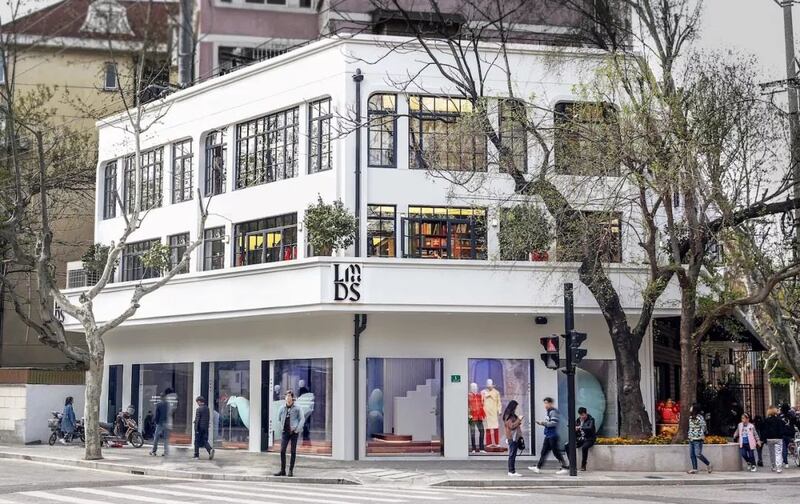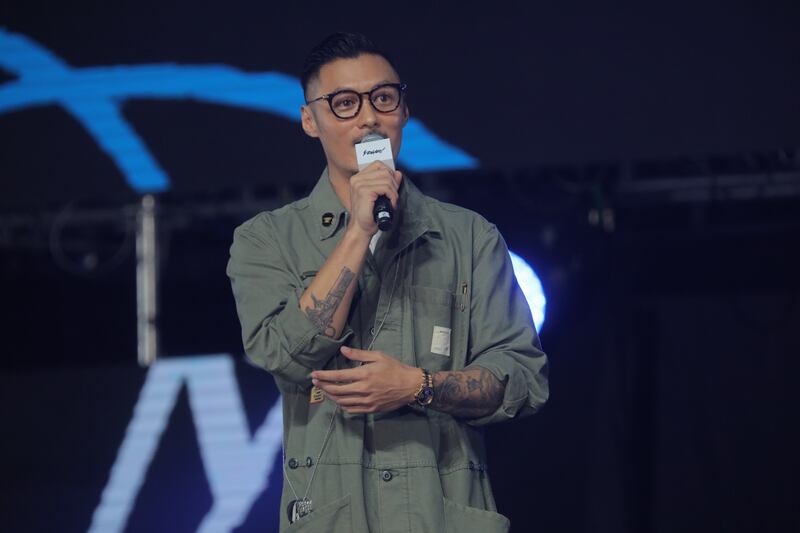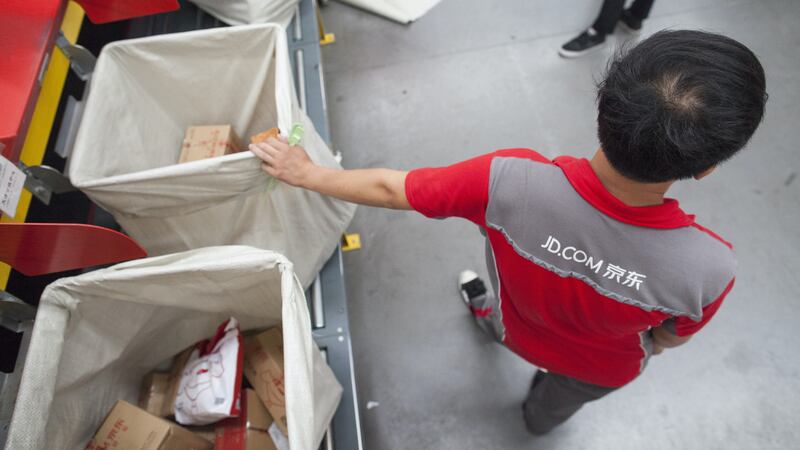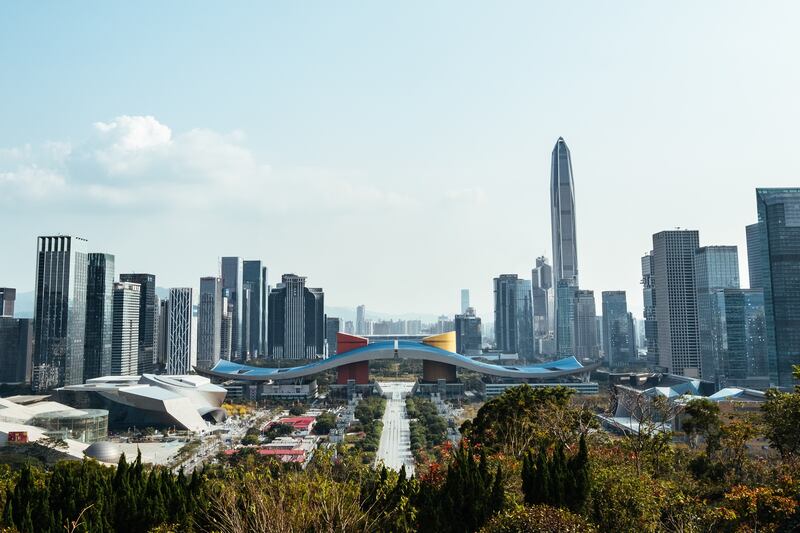
The Business of Fashion
Agenda-setting intelligence, analysis and advice for the global fashion community.

Agenda-setting intelligence, analysis and advice for the global fashion community.

SHANGHAI, China — When Meimei Ding, founder of Shanghai-based showroom and buying agency DFO, started travelling to international fashion weeks to meet brands and international showrooms seven years ago, the world was a very different place.
Though China was already a booming market for luxury brands, Chinese multi-brand stores were still few and far between, and Ding had a hard time getting doors to open in Europe’s fashion capitals.
“There was a lot of prejudice, especially in the early days we had to overcome this impression that everyone [from China] was out to steal [designs or somehow to] cheat, but over the years, things have really changed,” she explained.
Part of the reason for this change, of course, is the sheer strength of the Chinese market.
ADVERTISEMENT
The other major change, according to Labelhood Buying Director Jillian Xin (who also started travelling to international fashion weeks as a buyer in 2012 for her own multi-brand store and later worked as a senior buyer for regional powerhouse Lane Crawford) has been the fact that international brands and showrooms are now doing their due diligence to better understand the distinction between various retailers in the fast-changing Chinese market.
“It’s gone from limited to no understanding of the market and a hesitant perception of selling to China to showrooms actively wooing… Chinese buyers,” she said.
From Rejection to Recognition
According to recent data from China’s Fashion Designers Association, the number of multi-brand stores in the country has grown from 70 to over 500 in the last five years — a six-fold increase.
Despite the colossal opportunity that these retailers represent for global brands, some buyers continue to experience the same snobbery and suspicion described by their predecessors.
Just last year, Renee Lu sought out an appointment at a high-profile showroom during Paris Fashion Week but was rejected. Lu buys internationally for The Fashion Door’s seven retail outlets in Guangzhou, Suzhou, Shenzhen and, most recently, Hong Kong’s new K11 Musea retail development.

Hong Kong's K11 Musea development, which houses The Fashion Door's newest outpost | Source: K11 Musea
While there are all kinds of reasons a showroom might not accept an appointment, Lu reckons that they didn’t feel she was credible until the recent addition of a Hong Kong store to her store network.
ADVERTISEMENT
"I think now, the big showrooms will all welcome the Chinese buyers because they can see our profile and see we are growing," she said, emphasising the fact that her Hong Kong store carries brands such as Rick Owens, A-Cold-Wall* and Ambush. "As our number of stores goes up, it gives us a chance to go to the biggest showrooms."
Prominent showrooms include those operated by fashion business accelerator Tomorrow Ltd, whose clients include A-COLD WALL*, Ader and Ambush. Currently, the firm’s Commercial Director Elena Troulakis estimates that 35 percent of Tomorrow’s revenue is from Asia, with China as a noteworthy growth driver for the company.
“We’ve been seeing a growing trend of new multi-brands in third and fourth tier cities, and an increase in demand in contemporary brands and products,” she said. “In terms of buying behaviour, there are certain things they might look out for: fit, length, colour… those three things need to work for [buyers from China and Asia].”
Diligent showrooms have risen to the occasion. Troulakis noted that those on Tomorrow’s China-dedicated teams already use WeChat as a communication platform to make life easier for their clients. Industry veterans such as Ding and Xin have taken note of the addition of Chinese speaking sales staff on hand at many international showrooms over the past two or three years, as well as Asian fit models, helping buyers find products suitable for their clientele.
The Names to Know
While the wholesale business is in trouble across many mature markets, the fact that wholesale came late to the mainland means there is still room to grow. Of the 120 first to third tier cities in China, almost every one has a local market of engaged fashion consumers gravitating to influential multi-brand stores.
In Shanghai and Beijing, major mall developers SKP and Bailian have expanded from concession to a buying model, the latter through its concept store The Balancing. The introduction of Galeries Lafayette into Shanghai and Beijing to join long-time Hong Kong-based heavyweights Lane Crawford, Joyce and I.T has created a hugely influential upper echelon of Chinese fashion buyers clamouring for fashion week appointments.
In recent years, thoughtful, highly sophisticated players such as Le Monde de SHC, founded by fashion PR maven Eric Young, have joined the scene. The Shanghai retailer, located in the Former French Concession, stocks menswear, womenswear, accessories, childrenswear, beauty and books in its three-story space, the selection of which is thanks to Young and buyer Liang Lihui.
ADVERTISEMENT
They spend the time and effort to bring in things that not all stores would bring in, and educate their consumers.
“For me, their store is how a proper concept store should be, it’s tasteful,” said Julio Ng, director at creative consultancy Seiya Nakamura 2.24, which operates Ryodan showroom in Paris and represents brands such as We11done, Namacheko, Holzweiler, Fumito Ganryu and Mame Kurogouchi. This year, Ryodan will collaborate with Galeries Lafayette in Shanghai to create designer-focused installations for the department store’s grand opening.
“[Young and Liang] really stand out where communicating tasteful products to clients is concerned, they spend the time and effort to bring in things that not all stores would bring in, and educate their consumers,” Ng added.
Multi-brand fashion stores with a contemporary to designer positioning are also proliferating beyond top-tier cites, offering international brands a direct line to over half of China’s luxury consumers who, according to Boston Consulting Group, live outside of the country’s top 15 cities; spending in lower-tier cities is expected to triple to $6.9 trillion by 2030.
This means western showrooms need to become better versed with places such as Nantong, in Jiangsu province, where owner and buyer Yi Sun's Jaci Vela is located, or Guiyang, the capital of Guizhou province, where owner and buyer Cherie Wen stocks brands such as Joseph, MSGM, Sonia Rykiel and Tibi in her TAG (The Art Gallery) retail outlet.

Le Monde de SHC's Shanghai store | Source: Le Monde de SHC
In China’s northwestern city of Urumqi, An Meiling runs ANZI+; in Shandong Province’s Qingdao city, Ru Zhang and Belinda Zhao are owners and buyers for Vanzone. Though Zhang and Zhao’s store started life in 2010 exclusively stocking Chinese labels, they have since expanded to include international labels like Self Portrait and Chinti & Parker.
In the industrial heartland of Shanxi, meanwhile, Masstone owner and buyer Na Wang stocks Marni, Jill Sander and Jonathan Simkhai in the city of Taiyuan, population 4.2 million.
A Two-Way Street
Even as global brands and showrooms become acquainted with China’s retail pioneers, it still remains a challenge to understand the retail landscape of the giant, fragmented country. As Xin observed, “if you wanted to visit every city in China with a [multi-brand] store, it would take you about six months.”
Ding, likewise, empathises with the difficulty for showrooms in feeling comfortable with new Chinese clients they’ve never heard of, from places they’ve never heard of, with different English and Chinese names, a WeChat ID, a QQ string of numbers for an email but no website or Facebook.
Simultaneously, she sees the frustration on the Chinese side with the time it takes for things to get done internationally, the frenetic pace at which decisions are made and connections are forged in the Chinese business environment is somewhat at odds with the way European business is traditionally done.
The China market is a big opportunity and everyone is throwing themselves at it, but patience is important.
“Chinese retailers tend to work really, really fast, mostly in Chinese and mostly on WeChat, when they feel like they have to struggle in English through email, that’s a burden for them,” Ding said. Additionally, long lead times from international brands have helped give homegrown and Korean brands a leg-up in the Chinese marketplace, making it vital for international brands to have a profile “worth waiting for” in order to compete.
It’s one reason showrooms note that Chinese buyers tend to gravitate toward known brands, rather than take a risk on something unknown or directional.
Though both sides continue to improve mutual understanding in order to broker the right deals, it’s not always an easy road. For European brands, even knowing when and how to enter the Chinese market is no small feat.
Ng cautions brands to take a considered approach and not be tempted to rush in. “The China market is… a big opportunity and everyone is throwing themselves at it, but patience is important,” he cautioned.
“Know what the Chinese people need before you [try] selling [to retail buyers because ultimately] it has to make sense to the [end] consumer.”
时尚与美容
FASHION & BEAUTY

Shawn Yue representing Madness at Yo!Hood in Shanghai | Source: Courtesy
Fashion IP White Paper Shows Surprise Results
The Fashion IP 100, a white paper released by Chinese fashion company Suntchi and Alibaba's big data platform CBNData, has measured top intellectual property (IP) quotients based on influence among Chinese consumers, social media buzz, and search volume. The list covered the most commercially valued IP in designer brands, celebrities, artists, and influencers. Surprisingly, Shawn Yue — a Chinese actor, singer, and founder of his own streetwear brand, Madness — had the most valuable celebrity IP in China, followed by singer Kris Wu and Korean idol Kwon Ji Yong. Supreme topped the designer label list ahead of fellow streetwear players Yeezy, Champion, Clot and Off-White and Kaws came out tops among artists. (Denni Hu for BoF China)
In Other Kris Wu News…
French beauty giant Lancôme has named Kris Wu its first Asia-Pacific brand spokesperson. The choice is a break from tradition for the company, whose global "ambassadresses" include movie stars such as Julia Roberts, Lupita Nyong'o and Zendaya. Though they have worked with male ambassadors on men's lines in the past, Lancôme said in its announcement that Wu would be a spokesperson across skincare, make up and perfume lines. Though its an unusual move of Lancôme, this is increasingly the norm in China, where xiao xian rou (little fresh meat) male celebrities are commonly tapped for make-up campaigns and some of the country's major beauty KOLs are men. (Lancôme)
Shanghai Fashion Week Launch
The Shanghai Fashion Week organising committee unveiled its Spring/Summer 2020 schedule of shows and events at a press conference this week. Now in its 17th year, the event will include catwalk shows in its traditional downtown Xintiandi location from brands such as Xu Zhi, Leaf Xia, W.Rong, Yirantian, Ban Xiaoxue, At-One-Ment by Wanbing Huang, and Korean streetwear brand Beyondcloset — though they will take place in what organisers are calling a bubble-façade "Water Cube" rather than the traditional tents. Showrooms running in conjunction with Shanghai Fashion Week will include Mode, OnTimeShow, Shitang, DFO, Alter, Tube and Not Showroom. (Shanghai Fashion Week)
科技与创新
TECH & INNOVATION

JD.com staff at a warehouse and distribution facility | Source: Shutterstock
JD Launches Pinduoduo Rival
E-commerce giant JD.com has launched an online group-buying service in a move to compete in China's increasingly social e-commerce realm, giving rise to challengers like Pinduoduo. A dedicated new app, dubbed Jingxi, has launched, as well as a mini app within WeChat (Tencent is a major investor in JD.com). The move is seen as an effort to expand JD's presence into China's lower-tier cities and even rural areas to seek additional growth, as online shopping market growth plateaus in China's higher-tier cities and towns. Like Pinduoduo, Jingxi also offers flash sale deals and items at a bargain price. Shoppers enjoy steep discounts either when they share an item with friends or by joining an ongoing group-buying deal on the app. (KrAsia)
Alibaba Aims to Serve 1 Billion Customers a Year by 2024
At its annual Investor Day in Hangzhou, Alibaba management maintained revenue guidance of 500 billion yuan ($70.26 billion) for fiscal year 2020 and revealed its near term goals: to nearly double the gross transactions on its platforms and increase annual active consumers from the current 730 million to over one billion in the next five years. Part of the plan involves utilising recent acquisition Kaola's huge social community to educate consumers about international products that can then be purchased on Tmall Global. (Barron's)
China’s Social Media Trends for Q3
According to new research from Bernstein, Baidu trends saw Van Cleef & Arpels climbing 28 percent up the index over a year earlier, with other winners including traditional heavyweights Hermès (up 26 percent) and Louis Vuitton (up 13 percent), at the other end of the scale, Michael Kors lost 44 percent and Gucci and Balenciaga faded 14 and 15 percent respectively after flashy rises. In terms of Weibo traction, the mega-brands also hold a major advantage with Gucci, LV, Dior and Chanel leading in likes. (Bernstein)
消费与零售
CONSUMER & RETAIL

Actress Liu Tao as Andy in 'Ode to Joy' | Source: Ode to Joy
Luxury Should be Targeting China’s Girl Boss Generation
Female entrepreneurship is a rising phenomenon worldwide, but the "girl boss" identity is particularly attractive in China today because of the prized nature and profile of "self-made women" both on and off screen. Media representations of "alpha females" have been proliferating in the mainland recently. One of the most influential on-screen figures is Andy from "Ode to Joy," the CFO of an investment firm who returns to China after studying in New York. According to a report co-issued by the business site 36kr and and non-profit female entrepreneur network GirlUp, the typical profile of a female Chinese founder largely overlaps with that of luxury consumers. They are mostly millennials (born between 1985 and 1990), usually based in the country's most developed first-tier and second-tier cities, with almost half educated overseas. (Jing Daily)
Hang Lung Properties Chairman Predicts Dramatic Growth
Chairman of luxury mall developer Hang Long Properties Ronnie Chan says sales of luxury goods in mainland China could still grow four times the current market size, in comments that have been widely shared on China's WeChat social media platform. Since Beijing began reshoring luxury spend by stamping out parallel imports and reducing tariffs two years ago, the amount of luxury products purchased by Chinese consumers within China has grown to 25 percent, a figure Chan expect to double by 2025, in a period where the total sales volume is set of double. (Sina Finance)
Chinese Tourists Eschew Hong Kong For Southeast Asia
Singapore's tourism board said nearly 390,000 travellers from mainland China paid a visit in July this year, up almost 8 percent from a year earlier and a hefty 46 percent jump on the figure for June. The city-state is among a number of Southeast Asian economies benefiting from a spike in mainlanders spurning Hong Kong as violent anti-government protests roil the city. The Philippines, Thailand and Vietnam also saw year-on-year increases, according to the latest available figures. The number of Chinese holidaymakers in July this year in the Philippines surged 43 percent while for August, Thailand saw an 18 percent rise and Vietnam had a 12.4 percent rise. According to Hong Kong authorities, tourist arrivals dipped by 4.8 percent in July, compared to the same month last year. (SCMP)
政治,经济与社会
POLITICS, ECONOMY, SOCIETY

Shenzhen, China | Source: Robert Bye for Unsplash
Shenzhen Jumps into World’s Top Ten Financial Centres
Shenzhen jumped higher in the latest ranking of the world's financial centres, while Hong Kong moved closer to overtaking London as number two globally, according to a semi-annual survey by the China Development Institute and the London think tank Z/Yen Partners. New York retained the top spot in this year's Global Financial Centres Index, extending its lead over London by 17 points. Hong Kong remained in third place, but was just two points behind London as concerns mount over the economic effect of Brexit. The top 10 financial centres globally were: New York, London, Hong Kong, Singapore, Shanghai, Tokyo, Beijing, Dubai, Shenzhen and Sydney. (SCMP)
New Beijing Airport Opens Its Doors
Beijing's new multi-billion dollar airport, Daxing International, was formally declared open by President Xi Jinping days ahead of the 70th anniversary of the People's Republic of China on October 1. The 450 billion yuan ($63.24 billion) Zaha Hadid-designed project, completed in less than five years, will give a boost to infrastructure growth — flagging amid the biggest economic slowdown in decades, as China and the United States remain locked in a trade war. The phoenix-shaped airport, abbreviated PKX, is located in Beijing's south and will help ease pressure on Beijing's existing Capital International Airport, where capacity constraints often cause flight delays. (Reuters)
China Lags Behind in Global Gender Gap Rankings
China's State Council Information Office has released a white paper documenting the progress of women in China over the past 70 years. The country's female labour force now numbers 340 million — twice as many as when China opened up in 1979. In higher education, women make up 52.5 percent of students and life expectancy has grown 10.1 years since 1981. However, it's not all good news; a similar report released by the World Economic Forum (WEF) noted China's Global Gender Gap rank fell sharply from 63rd out of 115 countries in 2006, to 103rd out of 149 countries based on 2018 data. One of the contributors was China's female-to-male ratio of 87:100 at birth, ranking China last out of 149 countries surveyed. (Xinhua)
China Decoded wants to hear from you. Send tips, suggestions, complaints and compliments to our Shanghai-based Asia Correspondent casey.hall@businessoffashion.com.
With consumers tightening their belts in China, the battle between global fast fashion brands and local high street giants has intensified.
Investors are bracing for a steep slowdown in luxury sales when luxury companies report their first quarter results, reflecting lacklustre Chinese demand.
The French beauty giant’s two latest deals are part of a wider M&A push by global players to capture a larger slice of the China market, targeting buzzy high-end brands that offer products with distinctive Chinese elements.
Post-Covid spend by US tourists in Europe has surged past 2019 levels. Chinese travellers, by contrast, have largely favoured domestic and regional destinations like Hong Kong, Singapore and Japan.